The proportions of the components of the solution
The use of a concrete mixer makes it easier to mix the mortar.
Depending on where the solution will be used, the composition of the mixture may vary. The most common is considered to be a cement-sand type of mortar. It has a wide range of applications, is easy to prepare and does not require the use of special additives. Cement masonry can withstand heavy loads, is highly resistant to water and temperature extremes.
There are whole tables of the proportions of the components used to create a cement slurry, but several of the most used types have been empirically determined:
- Grade 100 - consists of 1 part of M400 cement and 4 parts of sand. To impart elasticity to the solution, plasticizers are added, if necessary, a dye is used. The second version of the solution of the same brand is 1 part of M500 cement and 5 parts of sand. This mixture is used for laying solid bricks and heavy natural stone, as well as for creating the underground part of brick foundations.
- Cement slurry of grade 200 is prepared from 1 part of M400 cement and 2 parts of sand. The mixture has increased strength and waterproofing properties. Used for laying heavy cladding and clinker bricks.
- Mix of grade M75 consists of 1 part of cement M400 and 5-6 parts of sand. It has a low strength, which is why the use for the construction of brick walls is limited. But such a solution is well suited for waterproofing various communications: sewer pipes, water pipes or wells.
Material consumption and mobility
The most commonly used mortar is cement-sand. The consumption of such material will be as follows: if your masonry is made in one brick, then about 70-80 liters of the mixture will go to 1 square meter of such a wall. Accordingly, if the laying is done in one and a half bricks, then you will consume about 120 liters of the mixture per 1 square meter.
Although today in the construction market there are countless different masonry materials for installing brick walls, the most common cement-sand mortar is still out of competition. The most favorable season for construction can rightfully be attributed to the summer period.
The mobility of the material depends primarily on the components of the batch. To determine the mobility, use a 15 cm cone, the angle of which is 30 degrees with a total mass of 300 g. After your composition is ready, this cone is immersed in it. From how deep in centimeters the cone sinks into the SMS and its mobility depends. When laying solid bricks, the mobility of the masonry composition should be at least 90-130 mm. If you plan to lay any kind of hollow brick, a mobility of 70-80 mm will be acceptable.
It is very important to know that the mobility of the mixtures in the heat must reach 120-140 mm for a strong masonry.
The strength of the finished wall is influenced by many factors, not only the composition and characteristics of the batch itself depends on the reliability of work.
Mortars with the addition of cement and lime
In order to prepare this type of solution, water, sand, cement and lime are used. Thanks to the last ingredient, the finished solution turns out to be more plastic, and also has greater strength than lime. In this composition, the most optimal combination of properties, therefore, this type of mixture is often used in professional construction. When erecting plinths and foundations, this type of mortar is used everywhere.

Preparation of cement-lime mortar - table
Preparation of a cement-lime-based mortar - step by step instructions
We will make M100 grade mortar using M400 cement. This will require 10 kg of cement, 50 kg of sand, 0.5 kg of lime and 50 liters of water.
Step 1.As with the preparation of any other solution, you must first prepare the required components. The water must be clean, with a temperature of + 15-20 degrees, the sand must be sieved. Cement does not need additional processing before use.
Step 2. Next, 2/3 of the estimated amount of water must be poured into the concrete mixer, in our case - 30 liters. You can use a hose, you can use a bucket.
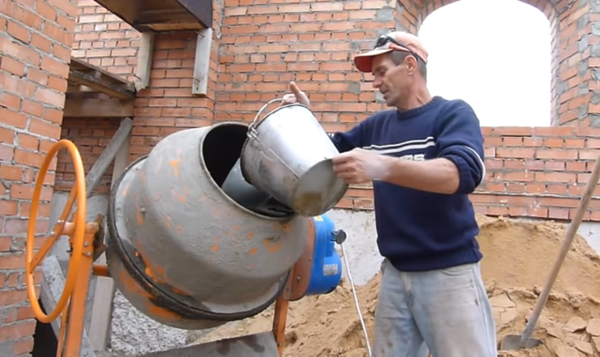
Fill in water
Step 3. Now you need to fill in 10 kg of cement and 5 kg of lime. Next, you need to mix these ingredients for a couple of minutes.

We fill up the cement
Step 4. Now the filler, that is, sand, should be added to the solution, and the rest of the water should be added. Sand is required 50 kg, water - 20 liters.
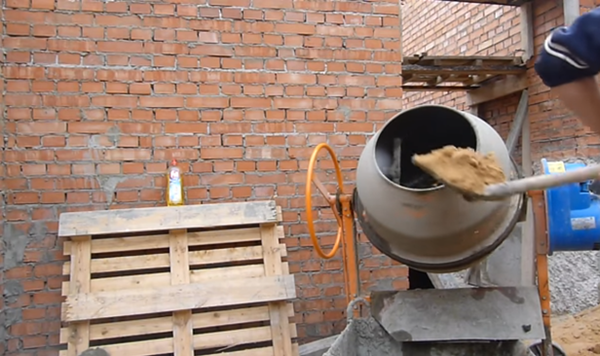
We fill up the sand
Step 5. At this stage, you need to stir the solution for 5 minutes to achieve a uniform consistency of the mixture.
Step 6. The solution is ready, you need to pour it into a bucket or other prepared container.
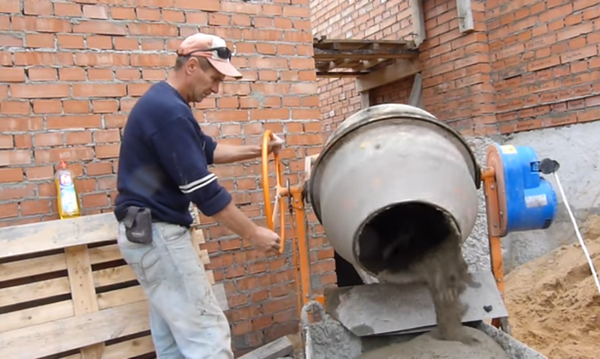
Pour out the solution
Making a solution with your own hands is not difficult at all, you just need to determine for yourself which mixture is necessary for your purposes, correctly calculate the proportions and strictly adhere to them.
The composition of the working mixture
A working composition that allows laying bricks consists of several components. It:
- cement or lime;
- sand;
- water;
- additives.
Cement or lime are binders. The name depends on their number: the solution is called lime, cement-lime, cement-clay or cement. The most common is a cement composition. It has rigidity, water resistance and strength. With its help, bricklaying of buildings and partitions is made.
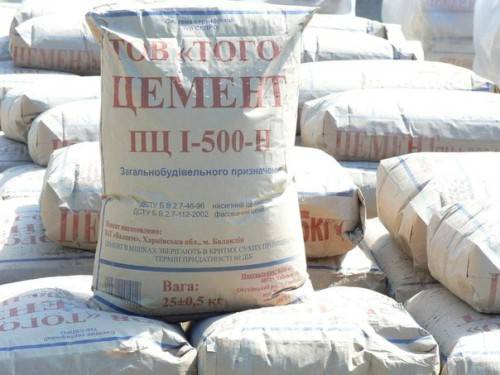 Cement - a binder component of the solution
Cement - a binder component of the solution
The lime composition is flexible and has low shrinkage. It adheres very well to many surfaces in construction. The solution is made warm. Often used in the construction of light-duty buildings. It is used to seal cracks.
The cement-lime composition is used in the construction of aboveground and underground structures. It has high strength and frost resistance. This composition has a greater thermal insulation capacity than the previous ones. He is capable of laying brick partitions and sealing cracks.
The least durable of the mortars is cement-clay. But it has low cost and high plasticity, frost-resistant and durable. The composition is used when working with ceramics, with bricks, with stones. Any solution must include sand. It must be sieved and free of impurities. Impurities include inclusions of earth and clay, grass and plant leaves, various roots and other objects.
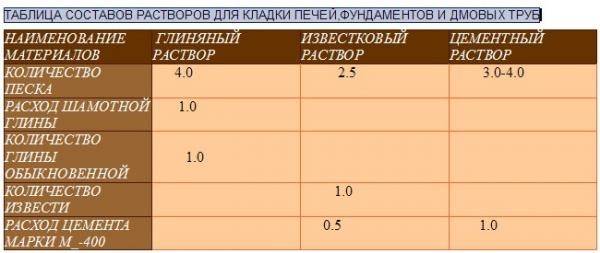
The amount of astringent can make the solution simple and complex. If the composition contains a single astringent component, the mixture will be called simple. With 2 or more components, the composition will be complex.
Requirements for masonry mixture
In detail, the requirements for masonry mortars are described in GOST 28013-98. According to this document, the following requirements are imposed on mortar mixtures:
- the composition must have a high degree of adhesion to bricks and other substrates;
- withstand a large amount of freezing and defrosting;
- in order for the masonry not to collapse under the influence of atmospheric influences and temperature changes, masonry mixtures must have high indicators of water resistance;
- due to the plasticity of the mortar, during the masonry process, it becomes possible to timely adjust the position of the masonry material, which significantly increases the quality and productivity of work;
- water-retaining properties prevent the mixture from decomposition and precipitation of heavy fractions;
- the strength characteristics of the composition are decisive in the calculation of building structures. This parameter shows what maximum loads the material can withstand. The grade of the solution reflects its strength in kgf / cm 2.
Failure to comply with these requirements leads to the formation of cracks in the brickwork, increased consumption of the mortar mixture, an increase in the thickness of the joints and reduces the productivity of work.
Step-by-step instruction
It is important to note that it is necessary to lay the elements, regardless of the parameters of the structure being erected, from the corners, observing a simple technology. Step 1
Take a couple of bricks and place them, observing a right angle, on the foundation base, checking the accuracy of the location with a construction triangle
Step 1. Take a couple of bricks and place them, observing a right angle, on the foundation base, checking the accuracy of the location with a construction triangle.
Step 2. Lay the next pair of elements, and then put two more on the resulting group of four bricks, which will allow the next row to overlap the previous row.
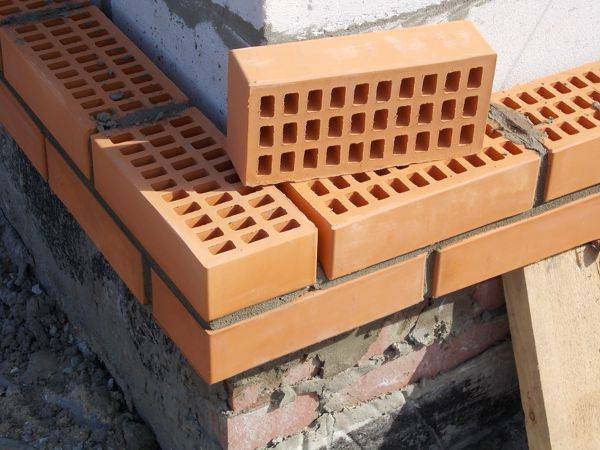
Facing masonry in half brick

Brickwork in half a brick
Step 3. Having brought the site into three elements, you need to carry out the same work on the other corner, using the ordering and pulling the moorings, which will allow the rows to be oriented strictly horizontally. The lacing should be approximately every 5 m, without sagging.
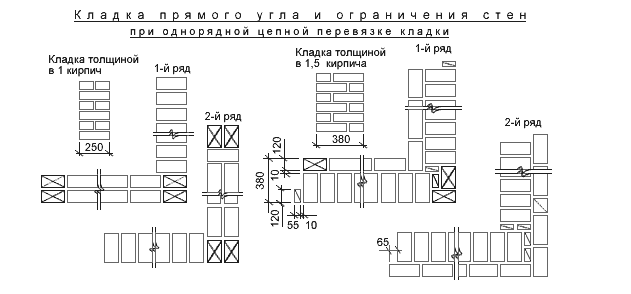
Laying corners with single-row dressing
Single-row masonry involves the construction of the beginning of the outer wall, and then the inner one, after which the zabutka is laid. The execution of multi-row masonry consists in the arrangement of blocks in a mixed or stepwise manner.
In what proportions should the cement be diluted?
The correct proportions can vary considerably for different mixtures. Therefore, before mixing, it is necessary to decide for what purposes a particular solution will be used.
Important! The consistency of the solution changes from the proportions of the components.
The most popular mortars that require cement are:
Mix for plastering walls. For its preparation, it is recommended to use 1 part of cement and 3 parts of sand. The volume of water is usually equal to part of the cement, but it cannot be added immediately, so it is poured into the dry mixture in small portions to obtain the desired consistency. If you need to carry out internal plastering work, then the M150 or M200 brands are chosen, and if you plan to plaster the facade, then the M300 brand will do.
Mortar for brickwork. It uses 1 part cement and 4 parts sand. The optimal brands for these works are M300 and M400. Often, slaked lime is added to such a mixture, which acts as an astringent component. Its amount is calculated as 0.2 parts for 1 part of cement... Due to this substance, a plastic solution is obtained, which is quite easy and convenient to work with. The amount of water may differ, since it is added gradually until a solution of the desired density is obtained.
It is important to make a mixture that will not drain from the trowel tilted at a 40 degree angle.

A mixture designed to create a floor screed. Usually proportions are used for it: 1 part of cement to three parts of sand. The M400 brand is considered optimal. Water is added in the amount of ½ of the amount of cement
To make a thin mortar, it is recommended to gradually add water, as it is important that the mixture stretches well to ensure that all voids in the substrate are filled.
Concrete. To create concrete, use 1 part cement, 2 parts sand and 4 parts gravel
If this solution is made to form the foundation of the structure, then it is necessary to purchase material of the M500 brand. The amount of water is equal to ½ of the part of the cement. The water must be clean and potable, and it is recommended to stir the composition with a concrete mixer (how to choose a concrete mixer for home and summer cottages). You must use the entire solution within an hour after receiving it.
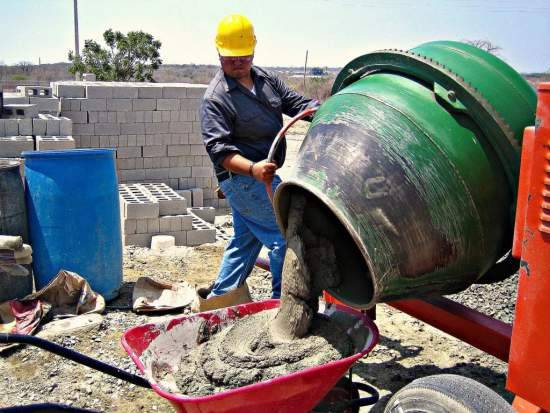
Important! If you want to get a mixture, the amount of which will be enough to form the foundation of the structure, then you will need a rather large amount of it, for which special equipment is used, represented by a concrete mixer.
Often, ready-made solutions are purchased at the factory, and in this case, you need to make sure that the mixture is created immediately before shipping to the customer. Before buying, all documents for the mixture are studied in order to know what components it consists of, as well as what parameters it has.
The correct grades of material must be selected to form the various solutions. If the mixture is intended to create brickwork, then you can use the M50 or M100 brands, and if you want to make a foundation, then it is advisable to choose brands from M300 to M500. The higher the grade of the material, the more durable and reliable the solution will be.
Composition
Masonry solutions are made of different compositions, taking into account the need for use in simple cases and in specific ones. The proportions and additives may vary even for indoor and outdoor use. Colored compositions used to create decorativeness can also differ in the percentage of binder and auxiliary components, depending on the place of application.
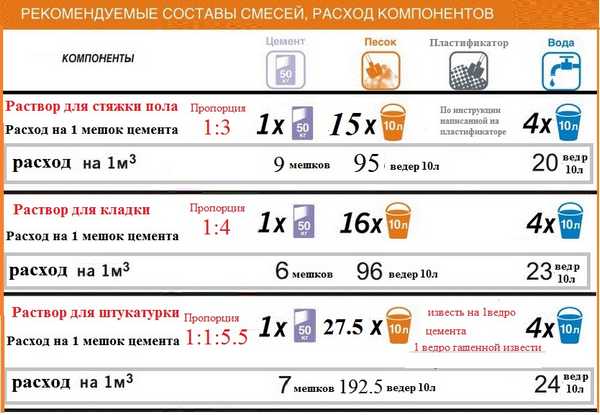 Scheme of recommended compositions and their proportions, depending on the purpose
Scheme of recommended compositions and their proportions, depending on the purpose
The following excipients may be included in ready-made industrial formulations made for special applications:
- Aggregates, the role of which in the standard mix is played by sand. In other cases, it can be sand mixed with fiber, gravel or crushed stone in the concrete added during the pouring work. The composition, which has the ability to retain heat and perform the function of thermal insulation, may contain polystyrene, perlite or expanded clay.
- Plasticizers - they are used to make the masonry material elastic. But this is not the only purpose for which plasticizers are included in the mixture. They increase the adhesiveness (adhesion to the surface of the main structural element of the masonry) and thereby increase the characteristics of the mixture, the possibility of its easier use in work, and this improves the properties of the building, its reliability and durability.
- Hardeners are added if any mortar (including cement mortar for brickwork) dries poorly. Most often, this phenomenon is associated with weather or climatic conditions. You need a good reason to use such a component. This is a damp and humid climate, a marshland, a building near the sea. This is necessary so that the result obtained in the manufacture of a masonry mixture with an excess of hardener does not become an obstacle to the construction of a building, wall or structure.
- Antifreeze additives are the main condition when solving the problem of how to deal with construction at a low temperature. Knowing how to make a mortar for laying bricks frost-resistant, you can carry out work in the winter or in conditions where the summer is short, and lowering the mercury column is a constant feature of the climate.
- Dyes are a feature of the recipe only in the category that is highlighted in GOST as colored. The use of the visualization of the seam and plaster for decorative purposes or to create a stylistic feature of the interior, facade or fence construction involves the selection of a dye to be added to the masonry mixtures at the factory. The consumer can only choose the desired or close shade.
 The variety of types of prepared compositions and their proportions
The variety of types of prepared compositions and their proportions
On the question of whether water can be considered a constituent auxiliary element of the prepared building mixtures or whether it belongs to the main ones, there are many discussions, which are essentially groundless, because it is impossible to prepare a single solution without water.
Preparation of mortar for bricklaying
The solids and water are mixed and mixed well.
Lime mortars
It is considered that the best mortar is cement mortar.
A more plastic composition is suitable for bricks, which is necessary for the construction of various fences and internal walls. Therefore, you can use a warm lime solution, which is prepared from quicklime crushed lime and sand.
The dry components are thoroughly mixed, and then only water is added. After adding water, everything is well mixed, the masonry mixture at the outlet should not contain lumps and impurities.
The components for the solution are taken in proportions: 1 part of lime, 2-5 parts of sand.
Cement mortars
In cement slurry, the main constituents are cement and sand. The proportions of the ingredients depend on the brand of cement. For example: 1 part cement and 3-6 parts sand.
Mix dry ingredients with water until a single mass is formed. First, we knead the dry ingredients, and only then add water. But this method is not very good, since even when using different grades of concrete, the solution comes out inactive and hard.
Cement-lime mortar
The mortar consists of lime and cement. Solution preparation principle:
- Lime mass (slaked lime), dilute it with water to a thick state, then filter;
- Dry cement and sand are combined;
- The dry components are diluted with lime mortar and mixed.
Lime is introduced for plasticity, and was used for masonry from any kind of brick.
Simple solution
A common solution is made from a binder and sand. Sometimes clay is taken as an astringent, but this solution is used for narrowly specialized work.
The cement - sand mixture is prepared 1: 3. Mix all dry ingredients, then gradually pour in water. After adding water, the mixture is stirred.
Complex solution
The consistency of the solution should not be liquid, like water.
A complex batch of a solution is considered to be the batch in which several components and binding material are involved. For example: cement-lime-clay or cement-lime.
When adding clay, the solution does not fall apart, it fits neatly and easily.
For brickwork of front walls, plasticizers are added to the solution. Such a solution is very economical; it is applied to the surface in an even layer.
Experts recommend preparing such a solution, but it will take a little longer to prepare.
Ingredient ratio
To prepare the correct solution, you need to calculate the amount of ingredients. For the solution, sand is taken from the middle fraction, the brand of the solution is different, but it is the fraction of sand that affects the proportions. For example:
- We use cement M-500, the proportions will be as follows: 1 part of cement for 2/10 lime take 3 parts of sand;
- We use cement grade 400, the proportions will be as follows: 1 part of cement to 1-3 / 10 parts of lime to 2.5 to 4 parts of sand;
- We use a brand of cement 300, 1 part of cement is taken for 2/10 lime for 3.5 sand.
All components of the solution must be mixed well.
This example is for a cement-limestone mixture and for a cement-sand mixture.
Solution proportions:
- When using a cement grade of 500, take 1 part of cement to 3 parts of sand;
- for cement grade 400, take 1 part of cement for 2.5 parts of sand.
Color additives
The seam color has a great decorative effect. The masonry becomes more elegant, the lines of the seams are emphasized and make the surface of the wall more expressive.
To change the color of the solution and give it the desired color, special pigments are used, which are added to the mixture when mixing the solution. There are different shades that can be obtained with pigments.
The simplest and most ancient way to color the solution is to add soot. The result is a deep black solution. Currently, oxides of various metals are used as pigments. They are sold in hardware stores and are readily available for purchase.
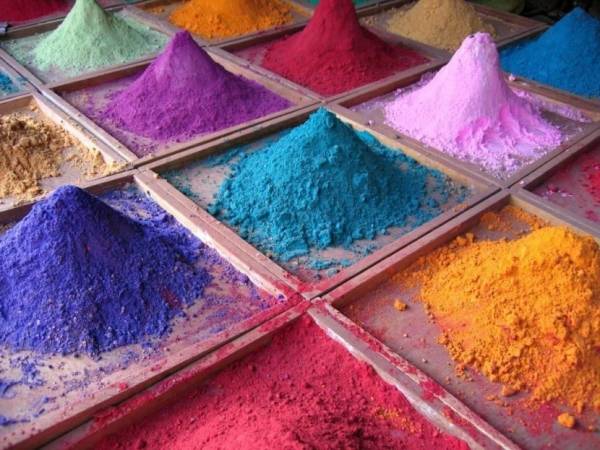
What mortar is needed for bricklaying
Correctly formulated masonry mortars must comply with the following standards:
- Competent choice of recipe for mortar for masonry, proportions of sand and cement and volumes of raw materials.
- The use of quality components.
- Thorough preparation of materials.
- Compliance with production technology.
- Optimum plasticity of the mixture. This parameter contributes to the effective filling of recesses in masonry layers.
- Curing time. Large volumes of mortar that harden quickly are unusable. To eliminate this phenomenon, you need to add lime to the composition.
- Increased strength. When the mixture hardens, the strength characteristics of the cement layers will be increased, and the brick wall will become resistant to deformations and other negative factors.
To ensure the effective formation of solid CPL, it is necessary to correctly select the proportions of the solution. In the process of the reaction of the components with water, the strength indicators increase, and the binder component combines the building materials into an integral structure.
Regardless of the formulation used, the masonry mortar and the proportions of sand and cement must include the following ingredients:
- Knitting part. In most cases, masonry cement is used, which begins to harden when interacting with the liquid, combining with the rest of the mortar.
- Filler substance. Designed to improve the performance and increase the volume of the mixture.
- Liquid. The water is used to react with the astringent part of the additive and aids in normal hydration.
The role of a substance with astringent properties can be played by the following types of raw materials:
- Portland cement.
- Lime.
- Lime-cement mixture.
When figuring out which cement is best for laying bricks, it is necessary to take into account the type of tasks for which it will be used and the characteristics of the brand.
Cement mortar for brickwork must also contain additional components, including:
- Additives for increasing frost resistance. Their task is to prevent crystallization of the liquid under the influence of frost and to normalize hydration.
- Plasticizing additives. They contribute to the workability of the working composition and facilitate its operation.
- Hardeners. They improve the process of polymerization of binder additives and reduce the period of a set of strength indicators.
- Dyes. With the help of colored pigments, you can change the range of materials and improve the aesthetic properties of the wall.
The final grade of the composition is determined by the proportions of sand and cement for brickwork. As the content of sand increases, the grade decreases, and as the proportion of cement increases, it increases. For mixing mortars, different brands of cement-sand mixture are used for brickwork, but the most common is M75. In this case, the proportions of cement and sand for brickwork are selected in a ratio of 1: 5: 0.8.
The masonry mortar can differ in a different ratio of ingredients. They are selected taking into account the purpose and scope of application.
Lime
For the construction of brick fences and wall structures, it is customary to use mortars for brickwork with high plasticity. Therefore, lime combined with sand is added to their composition. Dry additives are thoroughly mixed, and then filled with liquid. Then the ingredients are mixed again until a creamy consistency is formed without lumps and solid impurities.
The optimal proportions are chosen at the rate of 1 part of lime to 2-5 parts of sand.
Cement
Interested in how to prepare a mortar for laying bricks, the proportions of sand and cement must be chosen taking into account some requirements. Depending on the brand of the second component, the ratio of the ingredients is determined: for example, 1 part of cement can account for 3-6 parts of sand.
Cement-lime
The composition of a masonry mortar based on a cement-lime mixture is created from the following ingredients:
- Slaked lime, diluted in water to a thick state. The lime mass is carefully filtered.
- Dry cement for masonry and sand.
Each part is thoroughly mixed. The presence of lime in the composition of cement increases the plasticity of the mixture and allows it to be used with any kind of bricks.
Simple mix
A simple mixture is created on the basis of a binding agent and sand. Clay can be used as the first, but this option is in demand only for narrow-profile tasks.
Complex mix
Complex kneading is a formulation of various additives and an astringent base. These include cement-lime-clay and other solutions. The presence of clay in the composition contributes to easy and neat styling.
Helpful dosage guidelines
It should be remembered that for different types of building materials it is required to mix mixtures with different ratios of sand and cement for laying bricks. For solid bricks, one composition is needed, and for hollow bricks, another. Mixing water should be used only clean, with a temperature of + 15-20 ° C. If there is dirt or mold in it, it will later show up in the finish. For cement-sand, the ratio of water to cement is as follows - 0.5-0.8 to 1 part of the binder (depending on its brand). The sand is selected with a fraction of not more than 2.5 mm.
The proportions of cement consumption vary based on its grade (the higher it is, the greater its viscosity). If M500 is used to mix the cement-sand composition, then 1 part of cement must be added to three parts of sand. For M400, their ratio will be different: 2.5 parts of sand to 1 part of the binder. The amount of sand can be more, up to 8 parts - it depends on the purpose and brand of cement.
The finished mixture can be used within two hours, since after that the cement becomes less plastic and hardens. Therefore, you should mix exactly as much as the solution will be consumed on the masonry during this time.
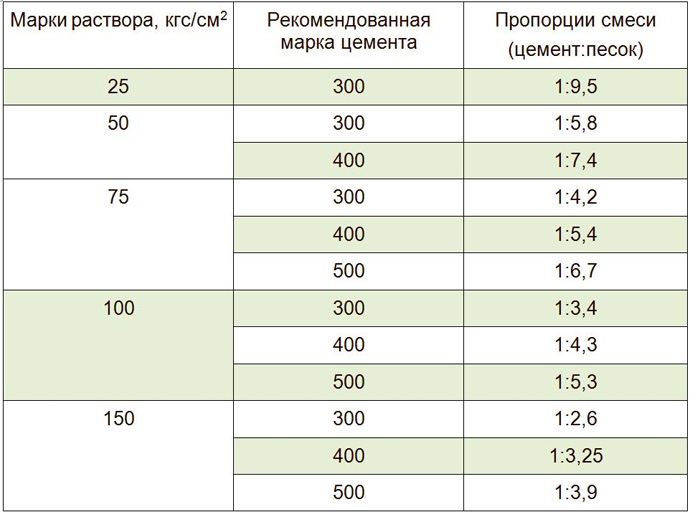
How to cook with your own hands?
First, the dry composition is mixed, sand is poured into the container, and then cement. First, it is better to sift everything so that there are no lumps. The mixture is thoroughly mixed and water is added, after which everything is mixed again until the consistency is homogeneous. It is better to choose a capacity in terms of volume almost the same as the amount of material required for a one-time job.
For greater strength and reliability, it is recommended to add detergent (50-100 g), it will increase its plasticity. Cement consumption depends entirely on its brand. For 1 m3, 510 kg of a binder of the M300 brand, M200 - 410 kg, M150 - 330 kg will be required. The consumption for masonry is affected by the building material used. For a solid brick, it will be required less than for a hollow one. For 1 m2 of surface for a single brick, about 0.2 m3 of the composition is needed, for one and a half - 0.25 m3.
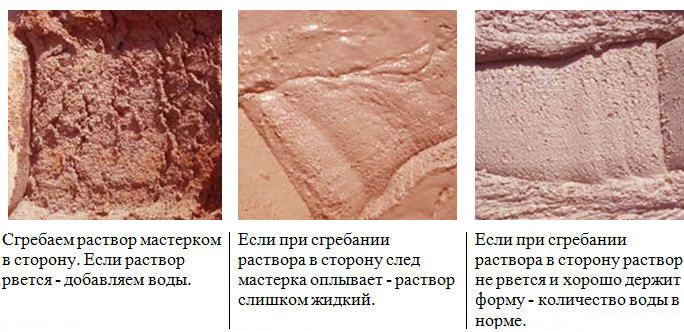
Truly working legal way to save money. Everyone needs to know this!
How do you know if the mixture is properly mixed and ready?
You can determine the readiness of the cement mortar with your own hands using a cone or by touch
You should pay attention to the degree of adhesion to the brick, as well as how mobile it is. Its readiness can be determined by making a dent in it: if its shape remains, then it is ready for use.
You can also tilt the container 40-45 °, it should not flow out.
You can use a cone, its height and width - 15 cm, weighs 300 g. The readiness of the composition is determined by immersing the cone in it. The sinking depth depends on the purpose of the mixture. For an ordinary brick, it should plunge by 9-13 cm, for a hollow brick - by 7-8 cm, but no more.
The quality of the mortar is determined by the amount of moisture in it and its plasticity. Too dry has poor adhesion to building materials, and too wet spreads strongly. If it sticks to the trowel, then add dry ingredients and mix everything thoroughly again. Mobility depends largely on the fraction of sand: the smaller it is, the less mobile the composition.
Density can also be determined using a cone or by plasticity. If it spreads under its own weight, then it is not suitable for use, if it crumbles heavily, then it also cannot be used for masonry.
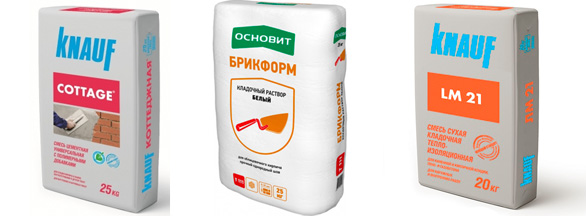
The cost of ready-made mixtures
In order not to knead by hand, you can buy a masonry mortar. The use of such building materials greatly simplifies the work and time costs, since there is no need to do the dosage.
The purpose depends on the proportion of the binder. An improperly prepared one not only complicates the work, but also significantly degrades the quality of the structure being erected. So, for example, a wall made of poor quality compound can become brittle and cracked. As a result, the heat capacity of the room decreases, in the heat it quickly heats up, and in the cold it cools down. Mixing the solution, you need to accurately observe the proportions. If they are violated, then cracks may appear in the masonry.
Mix of grades M125, 150 and 200
The M125 masonry mortar is suitable for the construction of walls made of stone and various blocks. A composition for laying gypsum tiles is often used. The fraction of the used sand can vary from 0.5 to 1 mm. The mixture of the M150 brand is characterized by increased hardness. Suitable material for masonry, and in domestic construction it is used for ceramics and finishing of concrete structures. This mixture is good in that it does not show sensitivity to low temperatures, but requires adherence to a temperature range of +5 to +35 ° C during the work process. Heat-resistant masonry mix M200 is distinguished by refractoriness and water-repellent characteristics. Washed mountain sand without organic compounds should be used for cooking. Among other things, shells and limestone fragments are used, the fraction of which is approximately 3 mm.
How to tell if a solution has been prepared correctly
If the solution is made according to all the rules, then it looks like thick sour cream. It is very simple to check its quality: you need to take a little of the resulting mixture on the tip of the shovel and see how it will spread out (if the solution spreads slowly, this means that it is of high quality).
